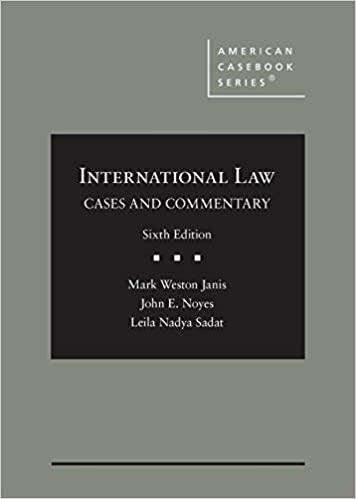Question
Consistent with what is stated in the Jennings text, [al]though nearly all states have adopted some form of limitations in tort recovery, these laws are
Consistent with what is stated in the Jennings text, "[al]though nearly all states have adopted some form of limitations in tort recovery, these laws are a maze of laws differing from state to state and are in a fluid state of judicial review" (2018, p. 321). Those, as well as federal proposals/actions by Congress, frequently take a variety of forms, from capping exemplary/punitive damages to shielding certain categories of industries/individuals from lawsuits, raising the burden of proof to a higher standard (e.g., "substantial evidence," "clear and convincing evidence," etc.) from the normal civil court "preponderance of the evidence"' standard, and/or requiring that there be "gross negligence" as opposed to just any "negligence," amongst other reform efforts.
Such attempts are by no means "new," for in 1991 bill S. 640, entitled, "A bill to regulate interstate commerce by providing for a uniform product liability law, and for other purposes," was introduced in the Senate on 13 March 1991 (with the related bill H.R. 3068 introduced in the House of Representatives).
The Summary of the bill stated that the provisions would "govern any product liability action against any manufacturer or product seller, on any theory, for harm caused by a product," and "[s]upercede any inconsistent state law regarding recovery in such actions." More specifically, the bill would have "limit[ed] punitive damages" and "require[ed] higher standards of proof for recovery of punitive damages," in that the plaintiff would have to prove that the "harm suffered was the "result of conduct manifesting a manufacturer's or product seller's conscious, flagrant indifference to the safety of those persons who might be harmed by a product," which must be shown by a raised evidentiary standard, i.e., the "clear and convincing" standard, instead of the normal "preponderance of the evidence" standard, but explicitly precluded "a failure [by the manufacturer or seller] to exercise reasonable care in choosing among alternative product designs, formulations, instructions, or warnings [as being able to constitute] such conduct." As to meeting government standards, the Summary stated that the punitive damages would be prohibited "against the manufacturer or seller of a medical device where: (the drug or device was subject to pre-market approval by the Food and Drug Administration (FDA); or (2) the drug is generally recognized as safe and effective under conditions established by the FDA," or "against a manufacturer [but not the 'seller'] of an aircraft where: (1) the aircraft was subject to pre-market certification by the Federal Aviation Administration (FAA); and (2) the manufacturer complied, after delivery, with FAA requirements and obligations with respect to continuing airworthiness."
Using your Web browser:
- Go to Congress.gov.(Links to an external site.) (Note: You may find it helpful to use the steps provided in previous Web Search Activities.)
- Provide an example, i.e., an applicable appropriate citation (bill number, and be sure to include which session of the Congress in which it was introduced) of another bill introduced in Congress in 2013 or after (i.e., the 113th Congress or thereafter) proposing some type(s) of tort reform and/or alteration of product liability (e.g., limiting punitive damage, changing the statute of limitations, other types mentioned earlier in the instructions, etc.) other than one provided by any of your classmates, so there might be some incentive to do this one relatively early in the week, and, with bills sometimes having more than one reform, e.g., H.R. 3068, referenced above,only cite one of the reforms,
- Give a brief description of what specifics the bill actually proposed with regard to how torts or product liability would be altered.
Step by Step Solution
There are 3 Steps involved in it
Step: 1

Get Instant Access to Expert-Tailored Solutions
See step-by-step solutions with expert insights and AI powered tools for academic success
Step: 2

Step: 3

Ace Your Homework with AI
Get the answers you need in no time with our AI-driven, step-by-step assistance
Get Started


